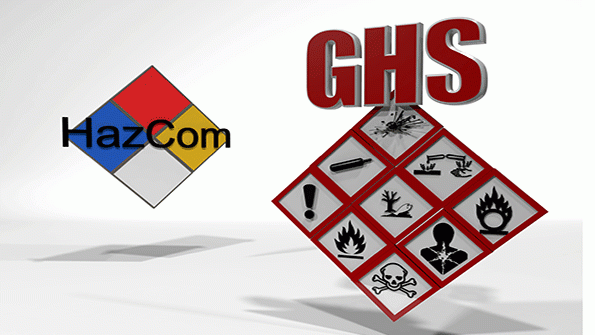Your organization’s emergency management plan is a critical tool developed to assist managers, coordinators, and responders. It allows them to effectively manage and mitigate the consequences of an emergency.
This guide will provide you with overall guidance on developing an effective emergency management plan.

What Is an Emergency Management Plan?
Responding to an emergency promptly can make a big difference in the outcome. Actions that protect the health and safety of people, limit harm to the environment, reduce property damage, and protect the reputation of the company should be initiated right away. Taking immediate action, however, means knowing what actions to take – and knowing what actions to take requires a plan.
(See A Look at Spill Containment and Spill Prevention and Control Countermeasures for related reading.)
An emergency management plan is a living document that is continuously updated based on new information, lessons learned from regular exercises, hazard assessments, actual emergencies, environmental factors, changes to legislation, and scheduled reviews.
The Five Stages of an Emergency Management Plan
While safety professionals generally divide emergency management plans into four basic stages, I believe there are five.
No matter how many stages you break it down to, prevention is always the first consideration in any emergency management plan. Prevention can potentially eliminate or mitigate the consequences of an emergency. It can simplify your plan, reduce the severity and impact of the incident, and potentially reduce the costs or amount of resources required.
1. Prevention
First, assess the hazards, risks, vulnerabilities, threats, potential severity, likelihood, consequences, and impact on your organization. Ensure that your organization has taken adequate steps to prevent an emergency where possible.
Consider the hierarchy of controls for prevention:
- Elimination: Determine whether it is possible to eliminate hazards in order to prevent a potential emergency
- Substitution: Consider substituting a work process, tool, or material for a less hazardous one
- Engineering Controls: Implement engineering controls to mitigate the hazard, such as machine guarding
- Administrative Controls: Consider administrative controls, such as training and job rotation
- PPE: As a last line of defense, assess PPE requirements to determine if they are adequate
2. Preparedness
What you do when an emergency or disaster occurs is important, but so is what you do before.
Educating workers, conducting training, running drills and exercises, backing up information, and having the necessary resources available are all critical to emergency preparedness.
A well-prepared company can effectively manage emergencies and disasters. A company that is not prepared can experience catastrophic consequences.
(Learn about Muster Points: How to Keep Your Team Safe During an Emergency.)
3. Response
When there is an actual emergency or disaster, first ensure medical attention for victims if necessary, then initiate the environmental response, the response to protect the property or any appropriate responses based on the emergency at hand. Use the plan, procedures, trained personnel, and resources to reduce the potential impact.
This is where all your hard work and preparation come into play. It’s what you have prepared for, trained for, and conducted exercises to simulate.
(Learn about First Aid for Major Trauma: Crushes, Amputations, and Impalement.)
4. Recovery
Once the situation is under control, begin the cleanup process and repair of any damage. If it is required as part of your plan, call in the appropriate cleanup and restoration services.
5. Mitigation
Finally, determine how this disaster, accident, or emergency occurred. Assess how you handled the situation and implement lessons learned into your emergency plan.
Developing Your Emergency Management Plan
There are five stages to the development of an Emergency Management Plan
1. Institute the Plan
- Establish terms of reference
- Determine authority and governance
- Identify potentially affected and functional operations
- Determine team size
- Identify team members, experience, and skills required
2. Assess and Identify
- Assess internal and external environment
- Conduct a gap analysis and assessment of existing management plans
- Identify vulnerabilities
- Identify hazards and threats
- Consider legislative requirements
- Conduct a comprehensive hazard assessment of all hazards
- Determine risks
- Consider potential likelihood and severity of an emergency
- Consider the potential consequences
- Consider the impact on the organization
- Determine priorities
- Identify risk mitigation controls
- Prioritize
3. Develop the Plan Elements
- Determine priorities
- Determine goals
- Identify limitations
- Establish governance
- Examine prevention, mitigation, preparedness, response, and recovery requirements
- Identify and assess opportunities, hazards, and threats
4. Develop the Plan
- Determine timelines
- Engage stakeholders in the development of the plan
- Draft the plan
- Re-engage stakeholders
- Revise and update the plan
- Seek final approval
5. Implement, Roll Out, and Maintain the Plan
- Roll out the plan
- Educate stakeholders and response teams about the plan
- Set aside assets and resources
- Consider logistics
- Conduct required training
- Conduct exercises
- Update the plan based on lessons learned from exercises and changing factors
- Review and update the plan at scheduled intervals
Elements of an Emergency Management Plan
Your final emergency plan may include some or all of the following elements:
- Introduction – Introduce the plan and discuss potential emergencies that could affect the organization
- Purpose: Discuss the purpose of the plan
- Authorities and Legislative Requirements: Review authorities to be notified or involved, as well as your organization’s legislative requirements
- Scope: Identify the scope of the plan, which emergencies it covers, and what it does not cover
- Background: Discuss the background of the plan and why it has been developed
- Objectives: Identify the objectives of the plan
- Risks and Threats – Define the threats based on the assessment of the organization’s risks and threats
- Operational Response – Provide specific instructions and details for each aspect of the plan (prevention, preparedness, response, recovery, and mitigation)
- Roles and Responsibilities – Outline the role and responsibilities of the emergency management and response teams, as well as potential authorities
- Resource Requirements – Outline the specific resource requirements determined through the development of your plan and assessment of potential risks and threats
- Logistical Requirements – Examine financial, resource, and support requirements, as well as how you access all those requirements in an actual emergency
- Plan Evaluation and Review – Outline your procedure and schedule for plan evaluation and review
- Attachments – Attach all supporting documentation necessary for your emergency management plan




